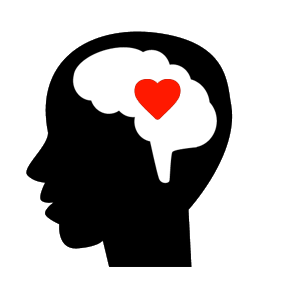John Richmond is the BC Association of Social Workers branch representative for Powell River/Sunshine Coast/Vancouver and co-founder of Stroke Survivor Advocacy Group Canada.
Little did I know 35 years ago, when I was attending the UBC school of social work, that I would eventually have my own social worker and be a client of a pioneering online UBC neuro-rehab program called BC Brain Wellness.
Two years ago, I lay in a hospital bed after a risky surgery called an EVT thrombectomy, which saved my brain and my life.
Anna, a social work colleague from a previous stage in my career, stood over me, and if she was shocked, she didn’t show it. What a pro. I was impressed. After all, I had a massive stroke 24 hours previously and I looked bad. I couldn’t talk or swallow, move the left side of my body or even recall the date.
The incidents of stroke in Canada and the world are on the rise. And it’s not just older folks having strokes – one quarter are under 55. I was 53.
80 per cent of strokes are caused by an interruption of blood flow to the brain. Strokes come in two types: ischemic (mine), a blood clot in an artery cutting off vital oxygen supply to crucial parts of the brain, and hemorrhagic, a massive bleed in the brain.
Knowing the signs of a stroke (FACE) is crucial to early intervention – and as I can attest firsthand, early intervention is crucial to saving a person’s life.
FACE: Face, arms, speech, time
Signs of a stroke are: the face drooping on one side; sudden loss of movement, range of motion in the arms; the slurring or jumbling of words.
Call 911 immediately. VGH and UBC provide real time advice to medical teams across the province to help rapidly diagnose and treat stroke.
In my case I couldn’t move my left arm or leg 24 hours after a bike accident tore an artery in my neck. I thought I could talk and was asking for help to get up, but my family said it sounded like I had marbles in my mouth. Unfortunately this feature of stroke – slurred speech – is often misconstrued as being intoxicated or on street drugs.
Being a rehabilitation social worker, I knew something was seriously wrong by the time the paramedics loaded me into the ambulance. I stared at the ceiling thinking I was dying and in a way, I was, minute by minute.
Fortunately for me and everyone who loves me, I made it to an emergency department in record time. The stroke was diagnosed and surgery recommended.
My partner, being my power of attorney, was able to consent on the spot (can’t say enough good things about advanced care planning – if you haven’t done it, please do).
The next day, there was Anna the social worker telling me the prognosis was good and recommending I go for inpatient neuro-rehab. Thanks to the new science of neuroplasticity, we know the brain can fix itself, but it takes work. And that work must start as soon after the stroke as possible.
Most patients have a window of one to two years for maximum recovery, but the first three months are the most important. Five days after my stroke I was in a stroke rehabilitation program in front of another social worker, Paul.
I’m not exaggerating when I say Paul was a saint. Kind, a good listener and full of good, supportive coaching tips.
“You can regain your functioning, but you have to work hard.”
Paul had a great tip – I could be discharged early if I was doing well and continue my rehab online.
Peer support
That’s when I met my new buddy Bruce, another stroke survivor living in Delta. As a social worker I’ve always been a fan of self-help and peer support, and here I was experiencing it firsthand.
More than 300,000 people in Canada live with the effects of a stroke and not everyone has had as successful a journey as mine – and that’s the reason we started our own peer support stroke group.
It was through our group that I learned about the online program BC Brain Wellness at UBC. I’ve been connected to UBC in a variety of ways for years and now I was going to be a “client” of this new, fantastic program.
Following an initial assessment, I signed up for and tried everything from mindfulness therapy to horticultural therapy, to chair yoga, and finally high-intensity interval training. The program – and my own hard work – helped me to get my balance back.
After a few months I was back on my bike, swimming in the ocean and working out at my local public recreation facility in Sechelt. A few months later I was back at work, helping others, including many folks who, like me, had experienced a stroke.
Stroke Awareness Month (June) is an important time to remind the public that we can help ourselves to recover but we need your understanding and support. Those who have not or cannot make a full neuro-muscular recovery need a more accessible community that helps us to participate to the best of our abilities.
The best treatment of course is stroke prevention, not ignoring high blood pressure and cholesterol and heart issues.
Stroke is on the rise in Canada, especially among women. Help is available and recovery is possible, but it’s a patchwork system across the country.
I survived a stroke thanks to BC Brain Wellness, and working my ass off.
People who have experienced stroke can reach out to other stroke survivors for support through our new group at strokesurvivorsadvocacygroup.ca.
